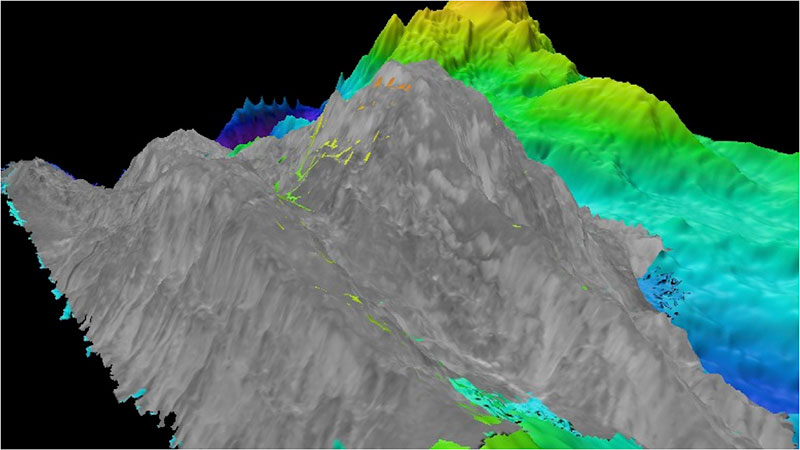September 26, 2020: Backscatter Mosaic

Image courtesy of the NOAA Office of Ocean Exploration and Research, Mid-Cayman Rise Expedition 2011. Download larger version (jpg, 392 KB).
During exploration missions where there is as much interest in geology and geophysics as in biology and habitat, multibeam backscatter has become an invaluable tool. This image shows a backscatter mosaic draped on top of multibeam data collected during the Mid-Cayman Rise Expedition 2011. Backscatter data is particularly useful in determining bottom type, because different bottom types “scatter” sound energy differently; for example, a softer bottom such as mud will typically return a weaker signal than a harder surface, like rock.
From: What is Multibeam Backscatter?.